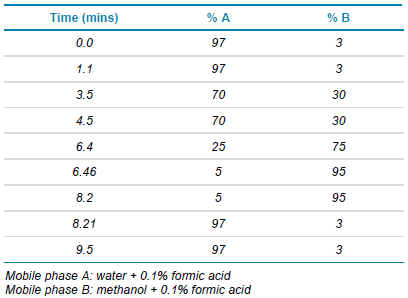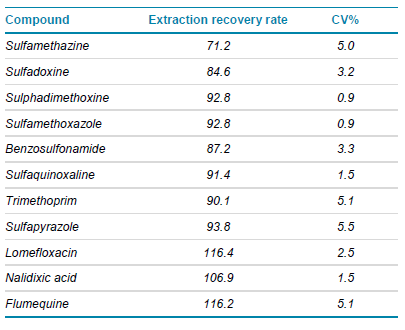Abstract
An accurate, quantitative method for the analysis of 11 sulfonamides and quinolones was developed on the SCIEX Triple Quad™ 3500 System, to meet the specific regulatory requirements. The method provides a quick and simple solution for quantification of sulfonamide and quinolone residues in aquatic products.
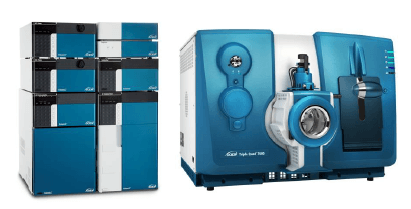
Introduction
Sulfonamides and quinolones are common synthetic antibiotics. Because of their effectiveness and low cost, they are widely used in livestock and aquaculture. The extensive use and large dosage leads to the presence of residues, which is a serious health concern. Ingestion of these antibiotics, by any means, will lead to accumulation in the human body. Sulfonamide residues will destroy the body’s hematopoietic functions, and quinolone residues are potentially carcinogenic and genotoxic. This presents a significant health safety hazard for the population.
China has clear requirements for the limits of sulfonamides and quinolones in aquatic products. Therefore, aquatic products must be tested for these two types of drug residues. Many products require testing, and the requirements are rigorous. The basis of existing sulfonamides detection in China is Ministry of Agriculture 1025-23-2008, with a quantification limit of 0.5 μg/kg. The basis of quinolone detection is GB 20366-2006, with a quantification limit of 1.0 μg/kg. Both of these drugs are addressed by Ministry of Agriculture Announcement No. 1077-1-2008, which requires a quantification limit of 2.0 μg/kg.
Here, an accurate, quantitative method for the simultaneous analysis of sulphonamides and quinolones was established on the SCIEX Triple Quad™ 3500 LC-MS/MS System, to meet the specific regulation requirements. The method provides a quick and simple solution to the problem of sulfonamide and quinolone residues in aquatic products.
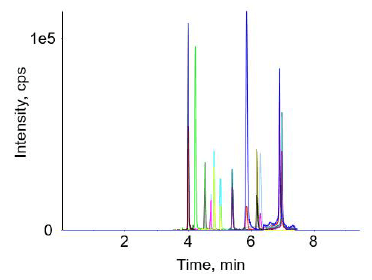
Key features of method
- Highly sensitive: the quantification limit for sulfonamides and quinolones is 0.1 μg/kg, which is 5 times lower than the limit required by Ministry of Agriculture 1025-23-2008, 10 times lower than the required limit for quinolone in GB 20366-2006, and 20 times lower than the limit required by Ministry of Agriculture Announcement No. 1077-1-2008
- The method extraction recovery rate is in the range of 70%- 120%, showing the accuracy and reliability of actual sample detection
Methods
Sample preparation: Weigh 2.5 g of homogenized fish sample in a 15 mL centrifuge tube. Add 5 mL of 5% percholoric acid and vortex for 1 minute. Centrifuge at 10,000 rpm for 10 minutes. Purify all the supernatants by SPE. Dry the eluent with nitrogen. Reconstitute the samples in 0.5 mL methanol/water = 1/9 (v/v) before performing LC-MS/MS analysis.
Chromatography: Separation was performed using the ExionLC™ System and a Phenomenex Kinetex C18 column (50×3.0 mm, 2.6 µm) and a flow rate of 0.4 mL/min. Column temperature of 40 °C and an injection volume of 20 µL.
Mass spectrometry: MS analysis was performed on the SCIEX Triple Quad 3500 System using an ESI source operated in positive ion mode. Ion source parameters were:
• IS voltage (ISV): 5500 V
• Curtain gas (CUR): 20 psi
• GS1: 50 psi
• GS2: 60 psi
• Source temperature TEM: 550 °C
• Collision gas CAD: 9 psi
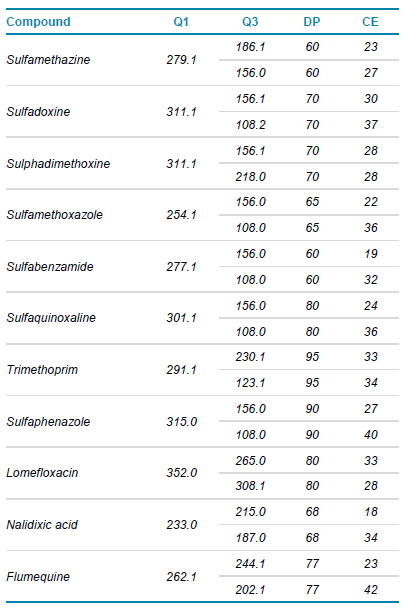
Results
Chromatography was developed to separate sulfonamides and quinolones using a 9.5 min run time (Figure 1). Concentration curves were generated and each substance demonstrated good linearity between 0.1-10.0 μg/kg (r > 0.99), ensuring accurate quantification (Figure 2, top). Statistics for the concentration curves showed very good reproducibility, the method had %CVs of 5.73 at a concentration of 0.1 μg/kg (Figure 2, bottom).
The extraction recovery rate was also evaluated. Under the conditions of this method, the extraction recovery rate of the 11 compounds is 71.2%-116.4% (0.25 μg/kg).
Conclusions
Here, a set of LC-MS/MS methods were developed for the detection of 11 sulfonamides and quinolones in aquatic products using the SCIEX Triple Quad 3500 System. This solution fully meets the requirements of the existing GB method detection standards. The method has simple and rapid sample processing, high method sensitivity, and demonstrates accurate quantification, from sample preparation to LC-MS/MS.
